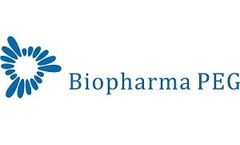Formaldehyde Articles & Analysis: Older
17 articles found
The world's first mature hydrogel product Ivalon (the crosslinking of formaldehyde ester and ethylene) came out in 1949, and PHEMA (polyhydroxyethyl methacrylate) came out in 1960, which pushed the market of hydrogel to prosperity. ...
H&E staining The frozen slide was warmed at room temperature for 10 min and fixed with 1 ml 4% formaldehyde (10 min). After being washed once with 1× DPBS, the slide was quickly dipped in water and dried with air. ...
Highlights Deterministic barcoding in tissue enables NGS-based spatial multi-omics mapping DBiT-seq identified spatial patterning of major tissue types in mouse embryos Revealed retinal pigmented epithelium and microvascular endothelium at cellular level Direct integration with scRNA-seq data allows for rapid cell type identification Summary We present ...
The relative expression level of the target gene was calculated using the 2–ΔΔCT method, with normalization to the expression level of the reference gene hypoxanthine-guanine phosphoribosyl transferase.50 Histological examination Dorsal skin tissues were fixed in 10% formaldehyde. This tissue was stained with hematoxylin and eosin to evaluate neutrophil ...
Glutaraldehyde and Formaldehyde Glutaraldehyde is very similar to formaldehyde in its structure and uses in the healthcare industry. ...
Histological Analysis Dorsal skin tissues were fixed in 10% formaldehyde and stained with hematoxylin and eosin to confirm neutrophil infiltration (Kang et al., 2015). ...
Moreover, toxicological studies have highlighted the potential health concerns of ENDS by revealing detectable levels of both heavy metals and carbonyls, such as formaldehyde and acrolein, in the vapor produced by some of the devices (9–11). ...
Some people are even allergic to the odorants put in cleaners—lemon scent, lilac scent! Formaldehyde: Formaldehyde and other aldehydes are often components of glues for woods and synthetics, furniture finishes, permanent press resins in curtains, and cloth furniture. ...
Glutaraldehyde is very similar to formaldehyde in its structure and uses in the healthcare industry. Chemically, glutaraldehyde exists at room temperature as a liquid, whereas formaldehyde exists under those conditions as a gas, which can easily be dissolved in water. Glutaraldehyde is often used as a substitute for formaldehyde because ...
Glutaraldehyde is very similar to Formaldehyde in its structure and uses in the healthcare industry. Chemically, Glutaraldehyde exists at room temperature as a liquid, whereas Formaldehyde exists under those conditions as a gas, which can easily be dissolved in water. Glutaraldehyde is very similar to formaldehyde in its structure and uses in ...
Formaldehyde is a colourless gas with a characteristic pungent odour. It's widely used in many industries and causes severe health issues if used inappropriately. Formaldehyde is highly toxic to humans, regardless of method of intake. Even very short-term exposure to formaldehyde irritates the eyes causing pain, redness, blurred vision and ...
Both Formaldehyde and Glutaraldehyde are found in the hospital environment at higher concentrations than those to which the general population is exposed. ...
The tested fungicides, commonly used in fish farming, were sodium chloride (NaCl), methanol-stabilised formaldehyde (F) and malachite green (MG). Both Fusarium species were isolated from eggs of the Argentinean pejerrey Odontesthes bonariensis (Valenciennes, 1835). ...
It’s amazing all the places that formaldehyde is found. It’s best known uses are in insulating material and particleboard. ...
.% dicyclopentadiene (DCPD), encapsulated in poly (urea-formaldehyde) microspheres (diameter = 226 ± 51 μm) and the catalyst used was 0.25 wt.% first-generation Grubbs' catalyst. ...
KCL-SDS assay was used to explore DNA-Protein Crosslinks (DPC) effect induced by formaldehyde (FA) and the repair. Gaseous FA could cause DPC at concentrations as 1.0 mg m−3 and 3.0 mg m−3 (p Keywords: formaldehyde, in vivo, in vitro, DPC, DNA-protein crosslinks, repair, DNA, ...
In a simulation study performed in Tor Mancina area (near Rome, Italy), two dangerous substances (formaldehyde and bromine) were tested. Chemical and physical characterisation, nutritive and organic contents, and trace elements presence were also investigated. ...







